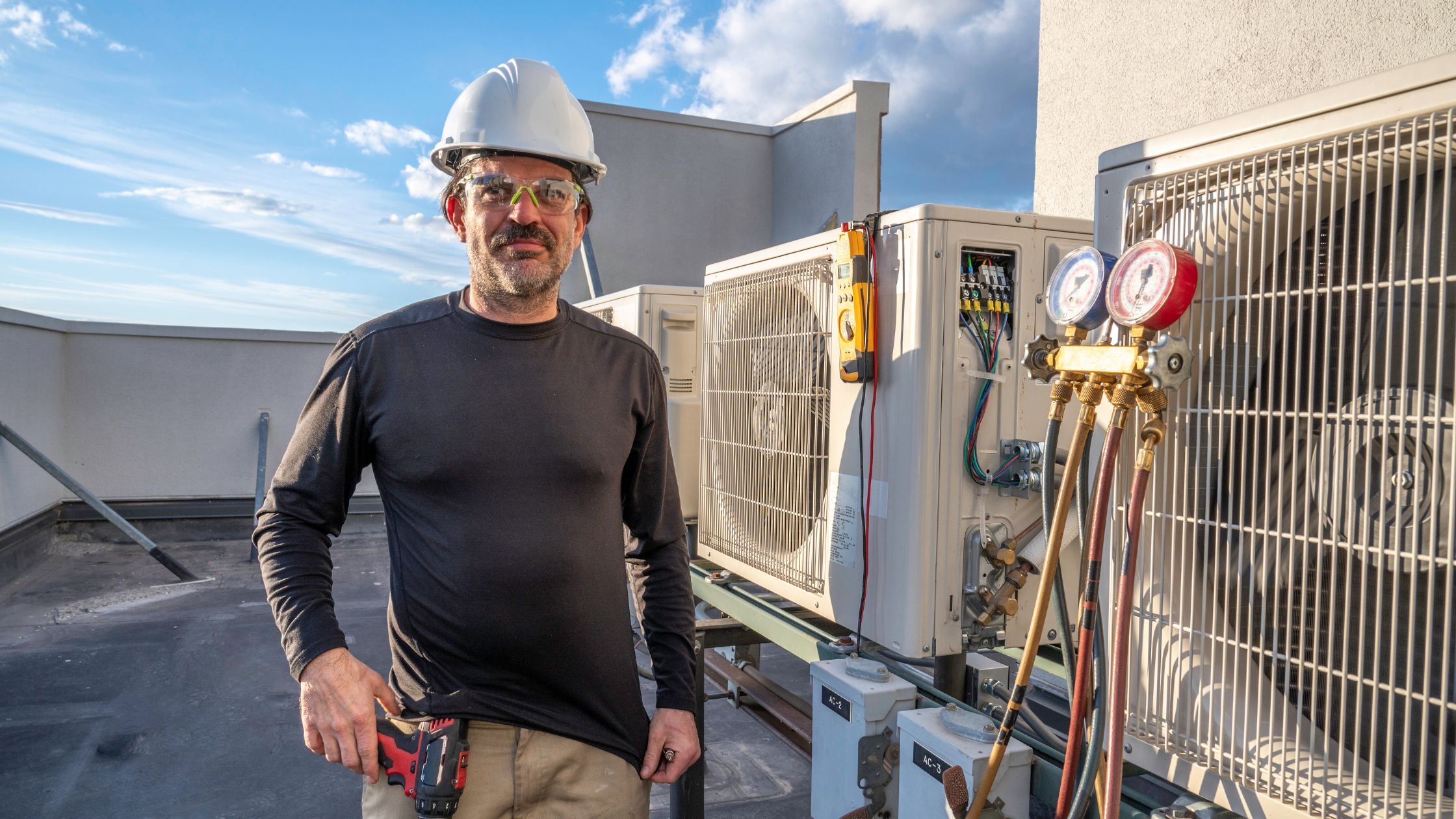The air conditioning industry has undergone significant transformations, especially in the development of 1.5 ton Air conditioner. Amidst increasing global emphasis on energy efficiency and the integration of smart technologies, manufacturers of air conditioning units are innovating aggressively to remain at the forefront. This comprehensive exploration delves into the most recent technological advancements in 1.5 Ton AC Unit, spotlighting innovations such as smart thermostats, energy-efficient compressors, and other features that elevate both performance and user experience.
Smart Thermostat Technology
Smart thermostats represent a leap forward in the functionality of modern 1.5 Ton AC Unit. These advanced devices do more than simple temperature adjustments; they provide a fully automated climate control system that optimizes both energy usage and indoor air quality. Utilizing sophisticated algorithms, smart thermostats learn user preferences and daily routines, adjusting the AC’s operation to maximize comfort and minimize energy consumption. Features like geofencing automatically adjust settings based on the user’s proximity to their home, ensuring a comfortable environment upon their arrival while conserving energy when they are away.
The ability to control these thermostats remotely via smartphones or voice-activated home assistants adds a layer of convenience, while also enabling users to monitor and analyze their energy consumption through detailed app reports and notifications, facilitating informed decisions about energy usage.
Energy-Efficient Compressors
At the core of any AC unit is its compressor, and recent advancements have been crucial in improving their efficiency. Modern 1.5 Ton AC Unit often incorporate inverter technology compressors that adjust their speed based on the required cooling demand. This variable speed capability not only reduces energy consumption but also lowers wear and tear on the compressor, extending its lifespan and ensuring quieter operation. Some high-end models feature dual inverter compressors, which further enhance the cooling process and temperature control, achieving superior energy efficiency.
Eco-Friendly Refrigerants
In response to environmental concerns, newer 1.5 Ton Air cooling systems are adopting eco-friendly refrigerants like R-32 and R-290, which have a significantly lower global warming potential than traditional refrigerants such as R-22 and R-410A. This shift not only helps in reducing the environmental impact but also increases the overall operational efficiency of the units.
Advanced Air Filtration Systems
Air quality is a major focus of recent AC technology advancements. Many units now include HEPA filters and activated carbon filters, which effectively remove pollutants, allergens, and fine particulates from the air. Some models also incorporate UV light technology that neutralizes airborne pathogens, offering an additional level of protection against bacteria and viruses. Additionally, the latest developments have introduced photocatalytic filters, which use light-activated catalysts to decompose organic compounds in the air, further purifying the atmosphere within homes and offices.
These advanced air filtration systems are particularly beneficial for individuals with allergies, respiratory conditions, or heightened sensitivity to air quality. By capturing a wide spectrum of airborne particles, including dust, pollen, mold spores, and smoke, these filters greatly enhance the indoor air quality, contributing to healthier living and working environments. Furthermore, some systems are designed to automatically monitor and adjust filtration settings based on air quality indicators, ensuring optimal purification without manual intervention. This integration of smart technology with advanced filtration capabilities represents a significant step forward in making indoor environments safer and more comfortable for everyone.
Enhanced Design Features
Design innovations in 1.5 Ton AC Unit have also kept pace with technological advancements. Modern units feature slimmer profiles and more aesthetically pleasing designs that easily integrate into various interior decors. Enhancements in fan blade design and air channeling also contribute to more efficient airflow, which increases cooling efficiency and reduces noise levels.
Noise Reduction Technologies
Significant improvements in noise reduction technologies have made modern 1.5 ton Air conditioner much quieter, suitable for both residential and office settings. Advanced insulation materials and motor technologies minimize operational sound, ensuring a quieter and more comfortable environment. Moreover, many units now feature variable-speed fans and compressors that operate at lower speeds for the majority of the time, which significantly reduces noise levels compared to traditional single-speed units. These components can adjust their output more precisely to the cooling demand, avoiding the frequent on-off cycling that not only causes wear but also contributes to increased noise.
Additionally, manufacturers have refined the design of the internal components and the overall structure of the AC units to further dampen sound. Anti-vibration mounts, sound blankets, and optimized airflow designs are now common features that help in reducing sound emissions. These enhancements make it possible to install air conditioning in noise-sensitive areas such as bedrooms and study rooms, where a quiet environment is crucial. As a result, the latest AC models can deliver high performance cooling and heating with minimal noise disruption, aligning with the modern demand for more comfortable and less intrusive home appliances.
Read more – Environmental Impact of Solar Panel Installation in Miami
Interconnectivity and Home Automation
Integration with home automation systems is becoming a standard feature in 1.5 ton AC units. This allows the air conditioner to work seamlessly with other smart home devices, creating a more interconnected and responsive home environment. For instance, AC systems can be synced with smart windows and lighting systems to adjust settings based on time of day and sunlight exposure, optimizing comfort and energy efficiency.
Adaptive Climate Control
Further enhancing user experience, some advanced AC models now feature adaptive climate control. This technology assesses external weather conditions and adjusts the indoor settings accordingly, ensuring consistent indoor comfort regardless of outdoor temperature fluctuations. Adaptive climate control systems utilize sensors and real-time weather data to dynamically adapt to changing environmental conditions. This proactive approach means that the AC unit can adjust its cooling or heating output before the indoor climate is affected by external temperature changes, maintaining a stable and comfortable indoor environment at all times.
Moreover, adaptive climate control can integrate with other smart home technologies, such as automated blinds or windows, to manage sunlight exposure and further stabilize indoor temperatures. This holistic approach not only improves comfort but also significantly enhances energy efficiency. By anticipating changes and adjusting operations preemptively, these systems reduce unnecessary energy consumption, which can lead to substantial savings on energy bills and a reduced environmental footprint.
Conclusion
The ongoing evolution of 1.5 Ton AC Unit showcases a commitment to more sustainable, efficient, and consumer-friendly technologies. From smart thermostats that optimize energy use to eco-friendly refrigerants that reduce environmental impact, these advancements are setting new benchmarks in the air conditioning industry. As technology continues to evolve, future generations of these units are expected to offer even more innovative features, aligning with global trends towards sustainability and improved quality of life.





